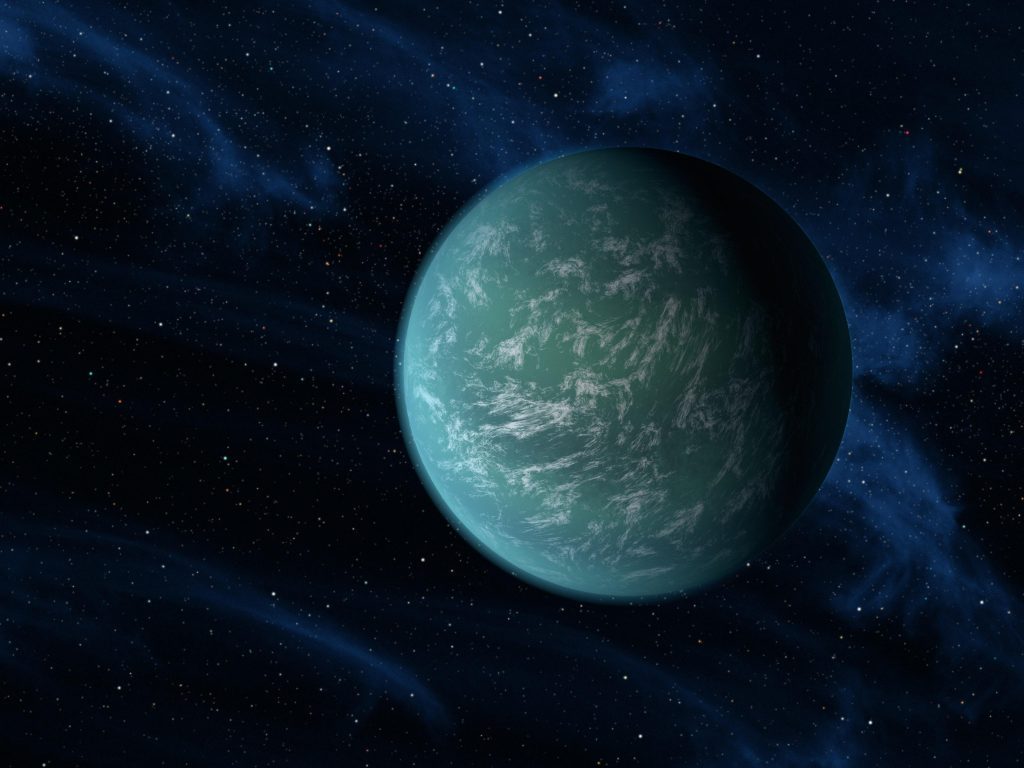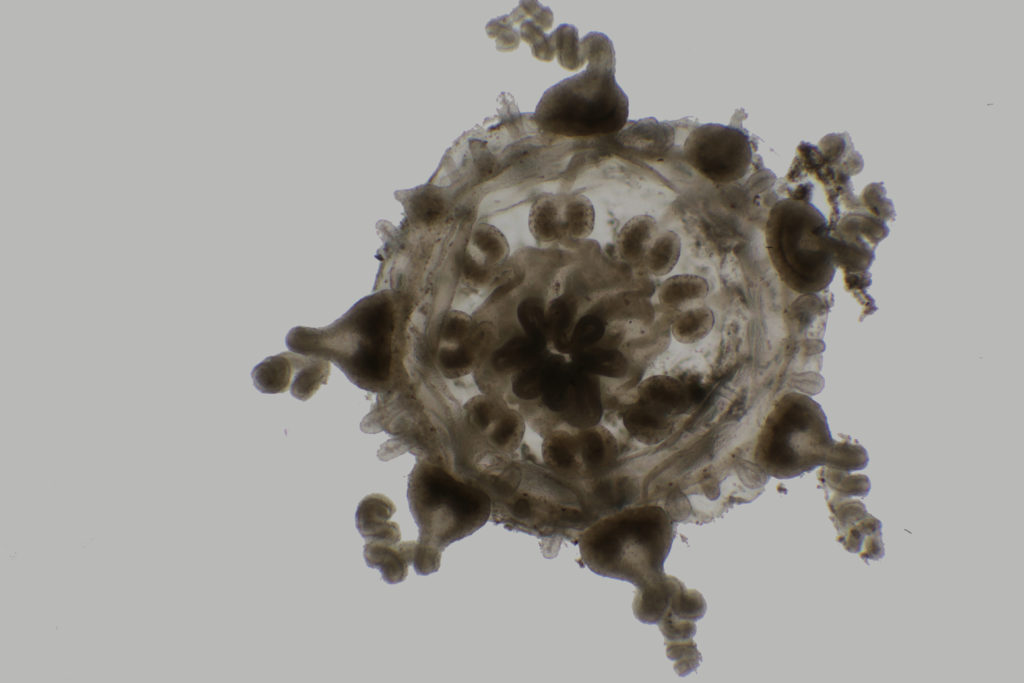Jesse sets off on a solo venture through the overgrown and tangled world of science news this Interronauts, beginning at the beginning with early Earth perhaps implanted with purple, not chlorophyll green, pigment, before heading undersea with two new species of very small jellyfish discovered by CSIRO researchers, bush-bashing in the crops, the cropage, with our and the Chinese Academy of Sciences’ work blending the benefits of brown rice with the pale ease of white rice, trekking through the clonal trunks, the forest of one known as Pando to get to the base of its stunted growth, and finally wrapping up in the cool slightly sour-atmosphere of a packed cinema, finding out how our smells might reveal movies’ classification.
Was life on early Earth purple?
Image credit: NASA/Ames/JPL–Caltech.
“Early life-forms on Earth may have been able to generate metabolic energy from sunlight using a purple-pigmented molecule called retinal that possibly predates the evolution of chlorophyll and photosynthesis. If retinal has evolved on other worlds, it could create a a distinctive biosignature as it absorbs green light in the same way that vegetation on Earth absorbs red and blue light,” full story on Astro Biology Magazine.
Tiny jellyfish discovery is bigger than you’d think
The underside of the newly-discovered M. antrichardsoni jellyfish.
“Our researchers have discovered and named two new species of micro-jellyfish found in Australian waters,” full story on CSIRO Scope.
Healthier rice is extra nice
“Everybody loves rice. Everybody loves to be healthy. We’ve discovered a way to combine those two loves,” full story on CSIRO Scope.
The Pando aspen clone or ‘trembling giant’, the world’s largest organism, is collapsing
“It’s a huge underground singular root system that sends up tens of thousands of clone aspen trees, each one genetically identical to the next, over an area of more than 100 acres. Now research published in PLOS ONE today has found that browsing animals, such as deer and cattle, are most likely to blame, according to lead author Paul Rogers from Utah State University and the Western Aspen Alliance,” full story on ABC.
A chemical criterion for rating movies
Cinema. Bob Aronson/Flickr/CC
“A measurable criterion now exists for determining the age rating of films. A group of scientists at the Max Planck Institute for Chemistry in Mainz has found that the concentration of isoprene in cinema air correlates with the cinema industry‘s voluntary classification of films. Evidently, the more nervous and tense people are, the more variable is the isoprene they emit. This can be used to deduce how “stressful” a film might be for children and adolescents,” full story on Max-Planck-Gesellschaft.
Listen and subscribe
- iTunes — Subscribe to us on iTunes and leave us a rating and review, if you’re so inclined.
- Blog — Listen to ’em all online on our blog.
Contact us
You can get in touch with the Interronauts team via Facebook, Twitter @CSIROnews, Instagram @csirogram, or by emailing us at socialmedia@csiro.au. Thanks for listening!






